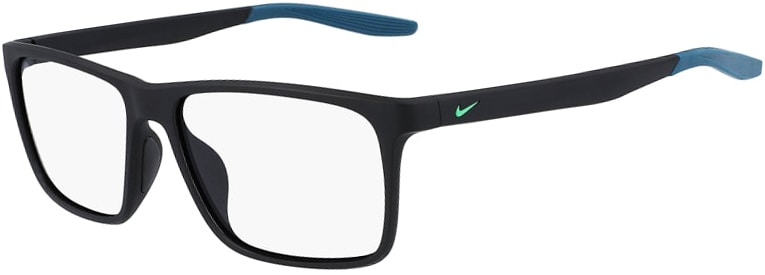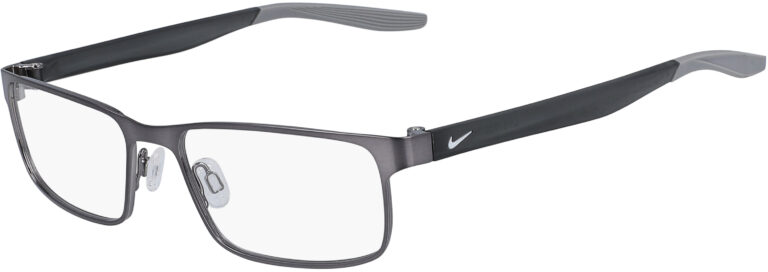- Safety Glasses
- Sports
- Sunglasses
- Eyeglasses
- Safety Products
- Accessories
If you are looking for high-quality eyeglasses from one of the world’s most innovative companies, Nike prescription glasses could be for you. They are among the highest optical company in the world. Starting from humble roots, Nike is at the forefront of developing new, exciting apparel for men and women of all ages. Whether or not you consider yourself to be an athlete, you may want to seriously consider Nike eyeglasses. Ultimately, the company has applied this same commitment to quality and innovation to each pair of its available line of eyeglasses.
Many Nike eyeglass designs have several critical features and benefits, these features and benefits give that special Nikevision level of quality. For instance, Nike glasses contain a lightweight injected frame design. This design allows all Nike eyeglass wearers to wear their glasses with maximum comfort and durability. Nike eyeglasses have dual-injected temples, which provides even more comfort for wearers. Finally, they contain channels on the inside of the temples which can enhance airflow. This is especially useful if you are active when wearing your glasses. Whether or not you are playing a sport, you can take advantage of all of these features by purchasing Nike prescription glasses.
As with all of our collections at Rx-Safety, Nike glasses come in a wide range of designs which include frameless for maximum visibility and a wide range of colors. You are sure to find your favorite color or a color that goes well with your best outfits. Some of the more common colors in our collection include matte black, matte grey, matte blue, and others. Along with this, most frames contain the famous Nike Swoosh logo. Nike’s Swoosh logo is one of the most famous logos in the world, and by showcasing it on your eyeglasses, you show that you are an ambitious, positive person with a big vision who is ready to take on the world.
With all of this said, we encourage you to take a look at our Nike glasses collection. Spend some time reviewing our inventory and write down the frames & colors that most speak to you. By doing this, you will certainly be on your way to finding your next pair of attractive eyeglasses. Order soon while free shipping is available.
Nike is the leading sports and optical company when it comes to sports apparel, sportswear, and sports glasses. If you are a runner, cycler, baseball player, lax player, etc then you know Nike well. Over the years Nike has evolved and adapted to the demands of the market and has improved its product quality and product performance. That is why we are proud to carry Nike prescription sunglasses, glasses, and goggles. Order yours below!
If you are ordering prescription glasses, it can take 7-10 business days before they ship. If they are non-prescription (plano) they can ship in as little as 1-3 business days.
Nike makes excellent glasses for work and play. Nike glasses are great for work safety applications, sport and leisure sunglasses, and even simply day-to-day prescription eyewear. For our full selection of excellent Nike frames, please browse our website.
Nike glasses are made of the most advanced materials, designed by the most talented designers, and always a stylish and safe choice.
You should leave any adjustments to your frames to a licensed Optician who is trained in how to safely adjust them.
A Titanium-Nickel alloy, 25% lighter than other metal alloy frames. Flexon can be bent out of shape and will always return to its original shape.
Fake Nike glasses would lack the correct branding, or the branding would be imperfect in some ways. We only sell licensed branded Nike eyewear.
A Titanium-Nickel alloy.
Showing 1–20 of 94 results




















Stay on top of the latest news about prescription safety glasses, eyewear, sunglasses, and all the trends in the industry.
DISCOVER NOWBe the first one to know about promotion, new products, and more.
Follow Us On Instagram @rx_safety